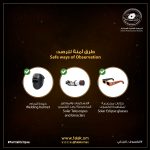MUSCAT : A new tool promises to expedite detection of infectious disease, according to researchers from McGill University in Montreal.
The diagnostic platform, called QolorEX, was developed by investigators at the university by combining existing technologies to build a new tool for accurate pathogen detection in less than 15 minutes. The device was tested for several respiratory viruses and bacteria, including the H1N1 influenza virus and SARS-CoV-2. It achieved 95% accuracy at identifying COVID-19 and its variants in 48 human saliva samples.

“COVID was something that opened our eyes, and now we have to think more seriously about point-of-care diagnostics,” Sara Mahshid, PhD, assistant professor of biomedical engineering and Canada Research Chair in Nano-Biosensing Devices at McGill University. The technology could become important for a range of medical applications, especially in low-resource areas.
Read More
- Why don’t more women participate in cardiac rehabilitation?
- Toxic Positivity: When “Stay Positive” Gets in the Way
- Embracing Omani parent’s culture: A Paragon to a Healthy Living
- We have plans to introduce robotic surgery in Oman, says Dr. Azad Moopen
- 175-bed multispecialty Aster Royal Al Raffah Hospital opens in Al Ghubra
The development was detailed in an article in Nature Nanotechnology.
Nonclinical Setting
The COVID-19 pandemic has demonstrated the need for fast and accurate testing that can be used outside of a clinical setting. The gold-standard diagnostic method is PCR testing, but its accuracy comes with a trade-off. PCR testing involves a lengthy protocol and requires a centralized testing facility.
With QolorEX, the investigators aimed to develop a new test that achieves the accuracy of PCR in an automated tool that can be used outside of a testing facility or hospital setting. Mahshid noted a particular need for a tool that could be used in congregate settings such as airports, schools or restaurants.
The device is compact enough to sit on a tabletop or bench and can be used easily in group settings, according to Mahshid. In the future, she hopes to further miniaturize the device to make it more scalable for widespread use.







